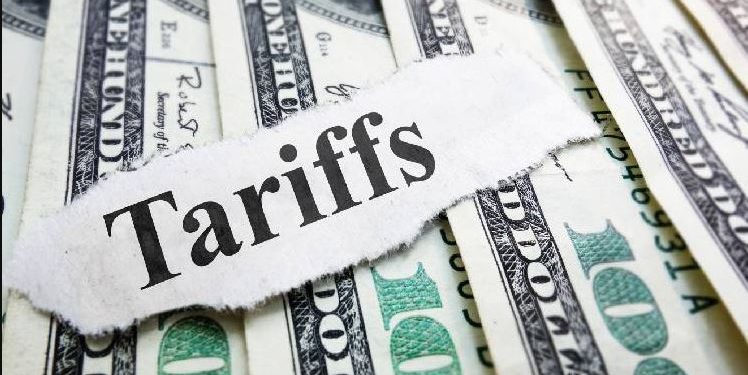New Delhi: The steep 50 per cent tariff on Indian goods entering the United States will take effect from August 27, severely impacting several labour-intensive export sectors such as shrimp, apparel, leather and gems & jewellery.
The high additional import duties would affect more than half of the USD 86 billion Indian exports to America, while the remaining items, including pharmaceuticals, electronics, and petroleum products, will continue to be exempt from the levy.
According to a US notification, “the duties… are effective with respect to products of India that are entered for consumption, or withdrawn from warehouse for consumption, on or after 12:01 am Eastern Daylight Time August 27, 2025” (or 9:31 AM IST August 27).
At present, a 25 per cent additional duty is already in place on Indian goods entering the US market. Another 25 per cent will be slapped as a penalty for purchasing Russian crude oil and military equipment.
According to exporters, this “prohibitive” duty will drive out a number of Indian goods from the US market, as major competing countries like Bangladesh, Vietnam, Sri Lanka, Cambodia, and Indonesia have much lower duty on their goods.
Certain firms are front-loading the consignments to America before the increased tariffs take effect. This was reflected in July’s trade data. India’s goods exports to the US rose 19.94 per cent to USD 8.01 billion in July, while imports increased 13.78 per cent to about USD 4.55 billion during the month.
During April-July, the country’s exports to the US increased 21.64 per cent to USD 33.53 billion, while imports rose 12.33 per cent to USD 17.41 billion.
An industry official from the leather and footwear sector said that companies would now be compelled to reduce staff and halt production until there is clarity on the proposed bilateral trade agreement (BTA) between the two countries. It aims to double the bilateral trade in goods and services to USD 500 billion, from the current USD 191 billion.
Sharing similar views, an exporter from gems and jewellery said that “job cuts will happen for sure in the jewellery and diamond sectors as the US is our largest market.
“We need a long-term export strategy to deal with these high tariffs. We need interest subsidy, ease of doing business, timely refund of GST dues and reformed special economic zone law,” the exporter said.
Mithileshwar Thakur Secretary General, AEPC (Apparel Export Promotion Council), said the textiles sector, with exports of USD 10.3 billion, is one of the worst-impacted sectors.
“The industry was reconciled to the 25 per cent reciprocal tariff announced by the US as it was prepared to absorb a part of the tariff increase. But, the additional burden of another 25 per cent… has effectively driven the Indian apparel industry out of the US market as the gap of 30-31 per cent tariff disadvantage vis-a-vis major competing countries like Bangladesh, Vietnam, Sri Lanka, Cambodia and Indonesia is well-nigh impossible to bridge,” he said.
Economic think tank GTRI said that US tariffs will impact 66 per cent of India’s USD 86.5 billion exports to America.
It said that USD 60.2 billion worth of goods will face 50 per cent duties from August 27, including textiles, gems, and shrimp.
“The United States’ new tariff regime, effective August 27, 2025, marks one of the most severe trade shocks India has faced in recent years. With over two-thirds of India’s USD 86.5 billion exports to the US now subject to prohibitive 25-50 per cent duties, critical labour-intensive sectors such as textiles, gems and jewellery, shrimp, carpets, and furniture face sharp declines in competitiveness and employment,” GTRI Founder Ajay Srivastava said.
He said India’s exports to the US are expected to decline steeply to approximately USD 49.6 billion in FY2026 due to Washington’s new tariff regime.
While 30 per cent of exports (USD 27.6 billion) will remain duty-free and 4 per cent (USD 3.4 billion, mainly auto parts) will face a 25 per cent tariff, the bulk — 66 per cent (USD 60.2 billion) covering apparel, textiles, gems and jewellery, shrimp, carpets, and furniture will be hit with a 50 per cent tariff, rendering them uncompetitive, he added.
“Exports from these sectors could plunge 70 per cent, dropping to USD 18.6 billion, causing an overall 43 per cent decline in shipments to the US and endangering hundreds of thousands of jobs,” Srivastava said, adding this is a strategic shock that threatens India’s long-standing foothold in US labour-intensive markets, risks mass unemployment in export hubs, and could weaken India’s participation in global value chains.
Competitors like China, Vietnam, Mexico, Turkey, and even Pakistan, Nepal, Guatemala, and Kenya stand to gain, potentially locking India out of key markets even after tariffs are rolled back, he said.
PTI







































